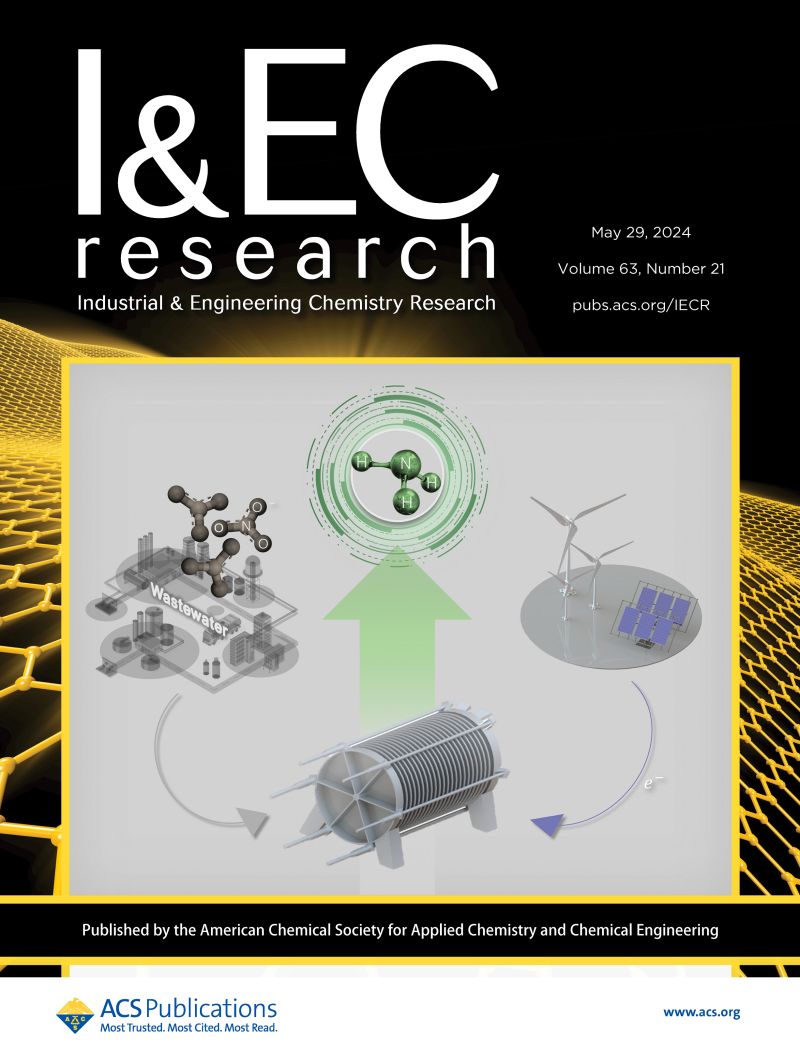Green Salt-Free High-Exhaustion Chrome Tanning Strategy: Biomass-Derived Aldehyde Acid–Chrome Tanning
IF 3.8
3区 工程技术
Q2 ENGINEERING, CHEMICAL
引用次数: 0
Abstract
Conventional chrome (Cr) tanning systems generate substantial wastewater containing Cl– and Cr3+, which presents huge environmental challenges. This study proposes a sustainable alternative, biomass-derived aldehyde acid–chrome (AA–Cr) tanning, to mitigate Cl– and Cr3+ pollution. Pretanning with 3 wt % AA effectively prevented acid-induced swelling of pelts in the absence of salts at a pickling pH of 1 to 4. The dialdehyde and carboxyl groups in AA facilitated the formation of a robust AA–Cr cross-linking network. Subsequent tanning with 3 wt % chrome tanning agent led to an exceptional Cr uptake rate that exceeded 98.5%, with the AA–Cr system exhibiting superior tanning performance compared to glyoxylic acid–Cr (GA–Cr). Compared to the Cr system, the AA–Cr system achieved 89.4% and 96.3% reductions in Cl– and Cr3+ loads, respectively, while exhibiting enhanced biodegradability. Life cycle assessment revealed that the AA–Cr system demonstrates remarkably lower carbon emissions, reduced resource consumption, and diminished human toxicity. This study presents a feasible strategy for salt-free, high-exhaustion chrome tanning and provides novel insights into the molecular design of biomass-derived AA.

绿色无盐高耗尽铬鞣制策略:生物质衍生醛酸铬鞣制
传统的铬(Cr)鞣制系统会产生大量含有 Cl- 和 Cr3+ 的废水,给环境带来巨大挑战。本研究提出了一种可持续的替代方法,即生物质衍生醛酸铬(AA-Cr)鞣制法,以减轻 Cl- 和 Cr3+ 污染。在酸洗 pH 值为 1 至 4 的条件下,使用 3 wt % 的 AA 进行预鞣,可有效防止酸引起的颗粒膨胀。 AA 中的二醛和羧基有助于形成强大的 AA-Cr 交联网络。随后用 3 wt % 的铬鞣剂进行鞣制,铬的吸收率超过 98.5%,与乙醛酸-铬(GA-Cr)相比,AA-铬体系表现出更优越的鞣制性能。与 Cr 系统相比,AA-Cr 系统的 Cl- 和 Cr3+ 负荷分别减少了 89.4% 和 96.3%,同时还表现出更强的生物降解性。生命周期评估显示,AA-Cr 系统显著降低了碳排放量,减少了资源消耗,并降低了对人体的毒性。这项研究为无盐、高耗竭铬鞣制提供了一种可行的策略,并为生物质衍生 AA 的分子设计提供了新的见解。
本文章由计算机程序翻译,如有差异,请以英文原文为准。
求助全文
约1分钟内获得全文
求助全文
来源期刊

Industrial & Engineering Chemistry Research
工程技术-工程:化工
CiteScore
7.40
自引率
7.10%
发文量
1467
审稿时长
2.8 months
期刊介绍:
ndustrial & Engineering Chemistry, with variations in title and format, has been published since 1909 by the American Chemical Society. Industrial & Engineering Chemistry Research is a weekly publication that reports industrial and academic research in the broad fields of applied chemistry and chemical engineering with special focus on fundamentals, processes, and products.
文献相关原料
公司名称
产品信息
阿拉丁
GA
阿拉丁
GA
 求助内容:
求助内容: 应助结果提醒方式:
应助结果提醒方式:


